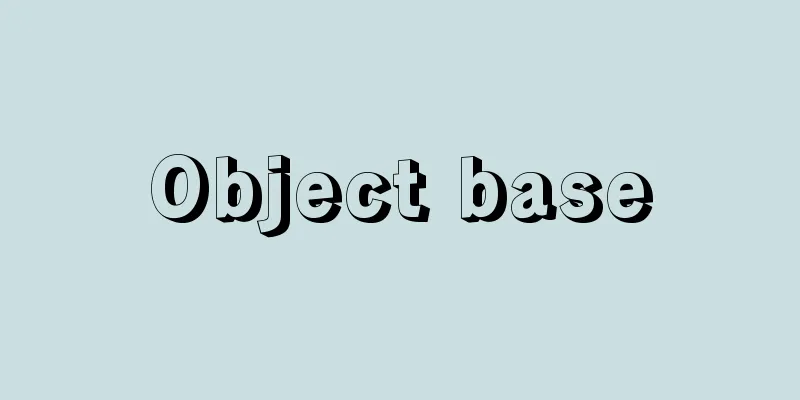Automobile liability insurance - Automobile liability insurance

|
In the event that a driver incurs damages to the life or body of another person while driving a motor vehicle, the driver must enter into a mandatory personal liability insurance contract to cover the damages. It is commonly referred to as "mandatory automobile liability insurance" for short. It was implemented in 1956 (Showa 31). At that time, the number of automobiles owned in Japan was about 1.5 million, but only about 310,000 of them were insured, and most of them were vehicle insurance. There were many victims of tragic traffic accidents who could not receive compensation because the perpetrator of the traffic accident did not have sufficient financial resources to pay compensation. Therefore, the Automobile Liability Security Law (Automobile Liability Law), which was promulgated on July 29, 1955, stipulates provisions regarding mandatory automobile liability insurance in order to provide prompt and reliable relief to victims of traffic accidents. From the perspective of protecting victims, this insurance has the following features: (1) Operators of motor vehicles (those who have control over and the benefit of operating a motor vehicle) are held virtually 100% liable for accidents and are forced to enter into insurance contracts in order to ensure that they have the financial means to pay compensation. In order to increase the rate of insurance coverage, a vehicle inspection linkage system has been adopted. When applying for administrative measures such as vehicle registration or vehicle inspection, an "Automobile Liability Insurance Certificate" that fully covers the vehicle inspection period must be presented to the administrative agency. This makes it possible to prevent uninsured vehicles from being driven on the roads. (2) The amount of insurance is set uniformly by government ordinance and cannot be freely set as in the case of general insurance. The maximum amount of insurance for death and residual disability requiring occasional nursing care is 30 million yen, the maximum amount of insurance for residual disability requiring constant nursing care is 40 million yen, and the amount of insurance for injury is 1.2 million yen. The amount of insurance for compulsory automobile liability insurance differs from the amount of insurance for general non-life insurance in that it only sets the payment limit for one victim of an accident. Therefore, insurance money will be paid up to the amount of insurance for one victim any number of times during the insurance period. There is no limit on the payment limit for one accident. (3) Insurers (insurance companies) are only exempt from liability for insurance payments if the damage was caused by the tortfeasor's malice. However, even in this case, the insurer has no exemption from liability from the victim's perspective. In other words, even if the damage was caused by the tortfeasor's malice, the victim can claim damages directly from the insurer. The insurer that made the payment to the victim can seek compensation from the government. (4) The calculation of insurance premiums is based on the principle of fair cost and no loss, no profit (the idea of setting insurance premiums so that neither loss nor profit occurs), which does not allow for the intervention of profit-making interests. This is based on the fact that this insurance has a strong social security character aimed at protecting victims. (5) The government provides compensation to victims of traffic accidents. In other words, in the case of a hit-and-run where the perpetrator is unknown, the perpetrator's insurer is also unknown. Therefore, even if the victim wishes to make a claim, they are unable to do so. In addition, in the case of uninsured vehicles, which cannot be eradicated even under compulsory insurance, compensation cannot be received unless the perpetrator has the financial means to pay compensation. Therefore, the government compensates the victim as compensation, an amount equivalent to the amount of the compulsory automobile liability insurance payment. The government compensation program is a government relief measure for victims of automobile accidents that are not covered by the insurance system. (6) The victim may claim from the insurer an amount set by government ordinance as a provisional payment for the payment of damages. Originally, the victim's right to make a direct claim against the insurer is exercised only when the liability of the perpetrator for damages to the victim is determined by settlement (agreement between the parties) or by a judgment. Therefore, the insurer will not pay compensation unless the liability and amount of liability of the perpetrator are determined. Therefore, in some cases, the victim may not receive compensation for a long time after the accident occurs, and may have difficulty in paying immediate expenses such as medical expenses and funeral expenses. The provisional payment system is a system in which payments are made immediately before the liability of the perpetrator is determined for these immediate expenses. The amount of the provisional payment is 2.9 million yen for each person who dies and 400,000 to 50,000 yen for each person who is injured. Since the provisional payment is a partial advance payment of the amount of damages, it is settled at the time when the amount of damages is determined and the insurance money is paid. In the past, there was a reinsurance system where the government covered the insurance liability of the insurer, and the reinsurance amount was set at 60% of the insured amount. There were two reasons why the government underwrote reinsurance. First, since compulsory automobile liability insurance is compulsory insurance and requires the conclusion and underwriting of insurance contracts, there is no room for risk selection. In general insurance, when an insurance contract is applied for by an insured, the insurance company can decide whether or not to underwrite the insurance at its own discretion. However, the Automobile Liability Act stipulates that the insurance company must not refuse to conclude an insurance contract unless there is a legitimate reason specified by government ordinance. In addition, there are restrictions on the freedom to select the insured. Secondly, it is based on the fact that profit-making intervention is excluded in the calculation of insurance premiums. However, this reinsurance system was deemed unnecessary now that the management base of insurance companies has been strengthened, and was abolished in fiscal 2002 (Heisei 14) along with the special account for compulsory automobile liability insurance reinsurance managed by the Ministry of Land, Infrastructure, Transport and Tourism. However, with the abolition of the reinsurance system, the government's prior review of insurance claims payments, which had been conducted by the government through the reinsurance business, is no longer conducted in principle. Therefore, the Automobile Liability Compensation Act stipulates payment standards for insurance claims, etc. (Article 16-3 of the Automobile Liability Compensation Act), stipulates the obligation of insurance companies to submit documents outlining the outline of their payment standards, etc. (Article 16-4 of the same Act), and stipulates the obligation of insurance companies to notify the payment of insurance claims, etc. (Article 16-6 of the same Act). [Mitsuo Sakaguchi] "All about Compulsory Automobile Liability Insurance," published and edited by the Insurance Mainichi Newspaper Company (2008) [Reference items] | | | | | | | | |Source: Shogakukan Encyclopedia Nipponica About Encyclopedia Nipponica Information | Legend |
|
自動車の運行によって他人の生命または身体を害し、損害賠償責任を負担した場合に、その損害賠償責任を保障するために、保険契約の締結が法律によって強制されている対人の損害賠償責任保険。略して「自賠責保険」と通称する。1956年(昭和31)から実施された。当時、日本の自動車保有台数は約150万台であったが、自動車保険に加入している自動車は約31万台で、しかも車両保険が中心であった。交通事故の加害者に十分な賠償資力がないために、賠償を受けられない悲惨な交通事故の被害者が続出した。そこで1955年7月29日公布の自動車損害賠償保障法(自賠法)は、交通事故の被害者の迅速かつ確実な救済のために、自賠責保険に関する規定を定めている。 この保険には、被害者保護の観点から、次のような特色がみられる。 (1)自動車の運行供用者(自動車についての運行支配と運行利益を有する者)に事実上の無過失責任を負わせるとともに、賠償資力をつけさせるために保険契約の締結を強制している。そして、保険の加入率を高くするために、車検リンク制を採用している。自動車の登録または車体検査などの行政処分を受けようとするときは、車検期間を完全にカバーしている「自動車損害賠償責任保険証明書」を行政庁に提示することを要する。これによって、無保険の自動車が道路を走行することを防止することができる。 (2)保険金額は政令で一律に定められ、一般の保険のように自由に定めることはできない。死亡の保険金額および随時介護を要する後遺障害の最高保険金額は3000万円、常時介護を要する後遺障害の最高保険金額は4000万円、傷害の保険金額は120万円となっている。自賠責保険の保険金額は、一般の損害保険における保険金額と異なり、事故による被害者1人についての支払限度額を定めているだけである。したがって、保険期間中ならば何回でも被害者1人に対する保険金額までは保険金が支払われる。1事故における支払限度額に制限はない。 (3)保険者(保険事業者)が保険金の支払責任を免れるのは、加害者の悪意によって生じた損害に限られる。しかし、この場合においても、被害者側からすると保険者には免責はない。すなわち、加害者の悪意による損害の場合であっても、被害者は保険者に対して直接損害賠償額を請求することができる。被害者に対して支払いをなした保険者は、政府に対してその補償を求めることができる。 (4)保険料の算出にあたっては、適正原価主義を採用し、営利目的の介入を認めないノーロス・ノープロフィット(損失も利潤も生じないように保険料を設定する考え方)の考えにたっている。これは、この保険が被害者の保護を目的とした社会保障的性格を強く有しているということに基づいている。 (5)交通事故の被害者の救済のために、政府は保障事業を行う。すなわち、加害者が明らかでないひき逃げの場合には、加害者の保険者も明らかでない。それゆえ、被害者が請求しようとしても請求することはできない。また、強制保険のもとでも根絶しえない無保険車の場合には、加害者に賠償資力がない限り賠償を受けることはできない。そこで、政府は被害者に対して自賠責保険の支払保険金相当額を保障金として填補(てんぽ)する。政府の保障事業は、保険制度では補償されない自動車事故の被害者に対する政府の救済措置である。 (6)被害者は保険者に対し、政令で定める金額を損害賠償額の支払いのための仮渡金として請求することができる。もともと、保険者に対する被害者の直接請求権の行使は、被害者に対する加害者の損害賠償責任が示談(当事者の間で話し合いで決めること)や判決によって確定したときに初めて行われる。したがって、加害者の責任および責任額が確定されない限り、保険者による填補は行われない。そのため、被害者は場合によっては事故の発生後長期間にわたって賠償金の支払いを受けられないことがあり、治療費や葬儀費など当座の出費に困ることになる。この当座の出費のために、加害者の責任が確定する前にただちに支払いをするのが仮渡金の制度である。仮渡金の金額は、死亡した者1人につき290万円、傷害を受けた者1人につき40万円から5万円となっている。仮渡金は損害賠償額の一部の先渡しとしての性格を有するので、損害賠償額が確定し、保険金が支払われる時点で精算される。 なお以前は、保険者の負う保険責任について政府が負担するという再保険制度が設けられており、再保険金額は保険金額の60%とされていた。政府による再保険の引受けが行われていた理由は2点ある。第一に、自賠責保険が強制保険として保険契約の締結の強制と引受けの強制をしていることから、危険選択の余地がないことがあげられる。一般の保険においては、保険契約者から保険契約の申込みがあった場合、保険会社は自己の判断で保険の引受けを行うか否かを決定することができる。しかし、自賠法により、保険会社に対して政令で定める正当な理由がある場合を除いて、保険契約の締結を拒絶してはならないとされている。また、保険加入者選択の自由に制限が加えられている。また第二に、保険料の算出にあたって営利目的の介入が排除されていることに基づいている。しかしこの再保険制度は、保険会社の経営基盤が強化されたいま、必要性が薄いとして、2002年度(平成14)から国土交通省が管理する自賠責再保険特別会計とともに廃止された。ただ、再保険制度の廃止によって、従来再保険事業を通じて政府が行っていた保険会社の保険金支払いに対する事前審査が原則として行われなくなった。そこで、自賠法では、保険金などの支払いについて支払基準を法定し(自賠法16条の3)、保険会社の支払基準の概要などを記載した書面の交付義務を定め(同法16条の4)、保険会社の保険金などの支払いの届出義務(同法16条の6)について定めている。 [坂口光男] 『保険毎日新聞社編・刊『自賠責保険のすべて』(2008)』 [参照項目] | | | | | | | | |出典 小学館 日本大百科全書(ニッポニカ)日本大百科全書(ニッポニカ)について 情報 | 凡例 |
<<: Automobile Liability Compensation Security Law - jidoushasongaibaishoshoho
>>: Japan Automobile Workers' Union - JIDOSHA SOUREN
Recommend
Kimberley
It is a diamond mining town in the northeastern p...
Coup
Also known as a coup d'état. An illegal transf...
Toyoshina [town] - Toyonaka
A former town in Minamiazumi district in the Matsu...
Abobyan, K.
...Electricity resources are abundant due to a ne...
Sarcophagus of Alexander the Great
…The archaeological site dates back to the 4th mi...
Kinso-i - Kinso-i
During the Sengoku period, surgeons who specialize...
Secret Pact of Russo-Chinese Alliance (English: Lu-Qing tong-meng mi-yue; Lu-Ch`ing tung-mêng mi-yüeh)
It is also called the Russo-Chinese Secret Agreeme...
Refrigerated - Reizou
The process of keeping food and raw materials at l...
Heterocentrotus trigonarius (English spelling) Heterocentrotustrigonarius
…Sea urchin [Minoru Imajima]. . . *Some of the te...
satellite survey
...Widely used for detailed surveying to create l...
Coordination polyhedron
When considering the crystal structure of inorgani...
Curved basin - Kyokukou basin
...basins are divided into three categories based...
Chips - Kiriko
〘noun〙① chopped tobacco. ※Kabuki, Osome Hisamatsu ...
Honjo [village] - Honjo
A village in Higashichikuma County, central Nagano...
Battle of Mikatagahara
A battle between Takeda Shingen and Tokugawa Ieyas...









